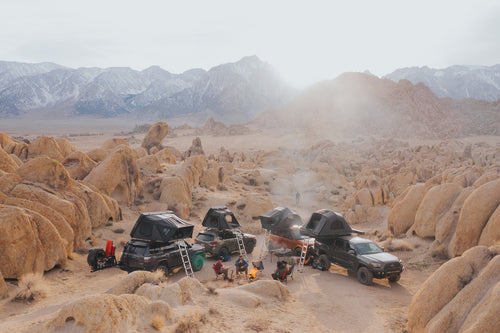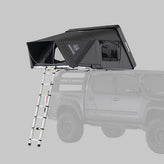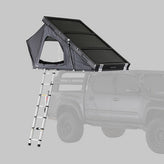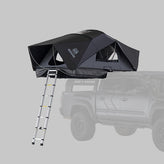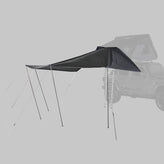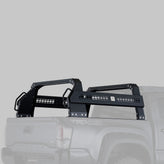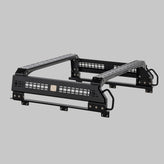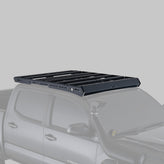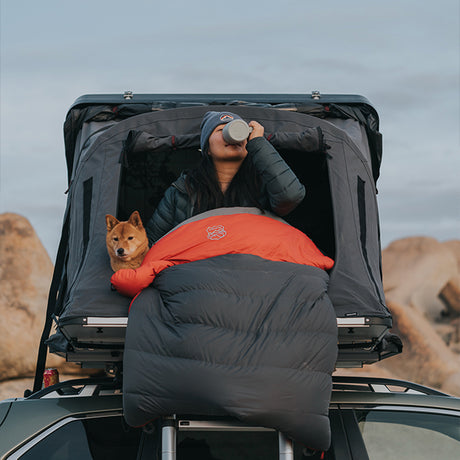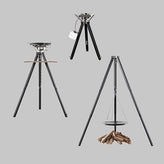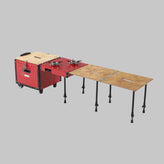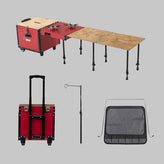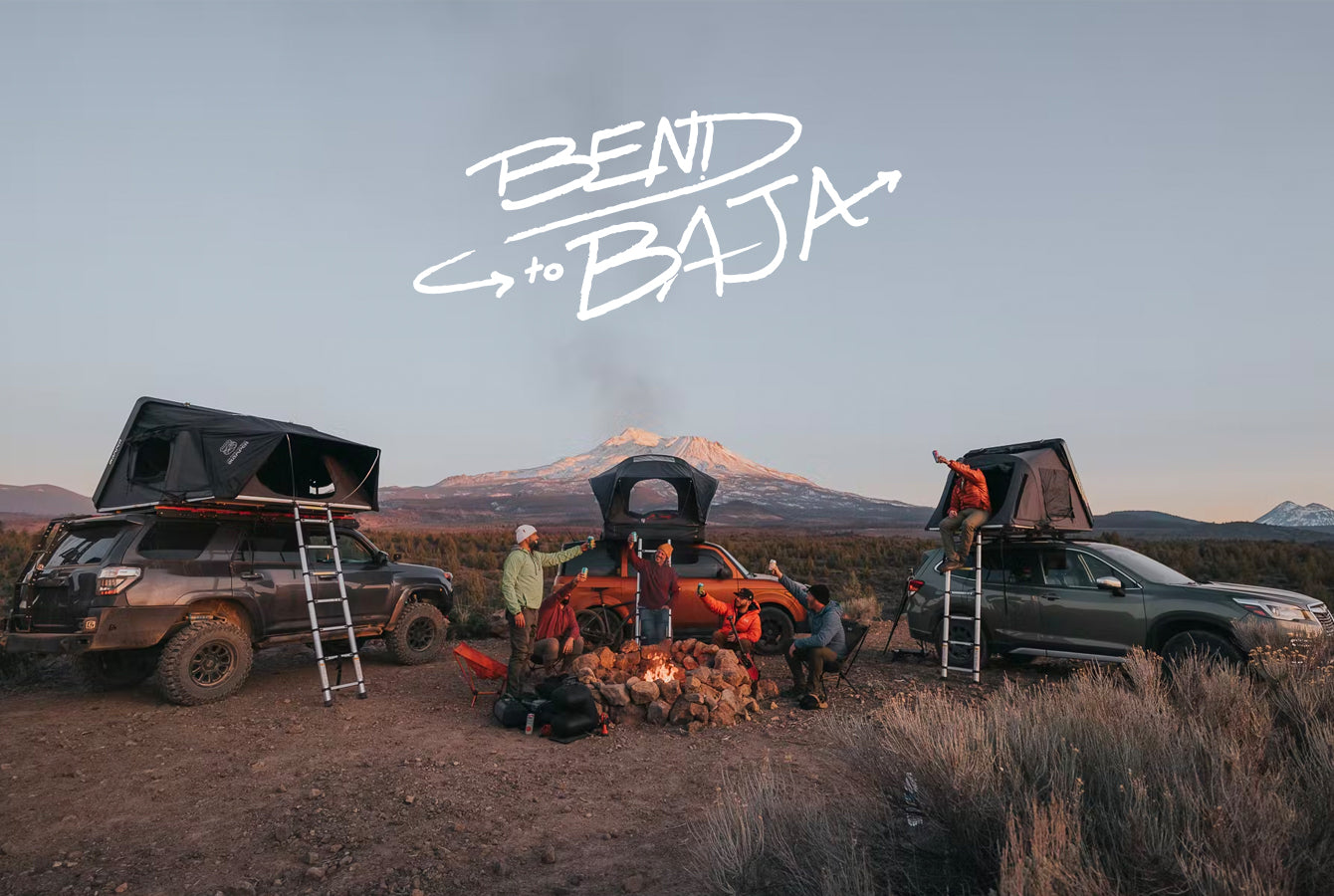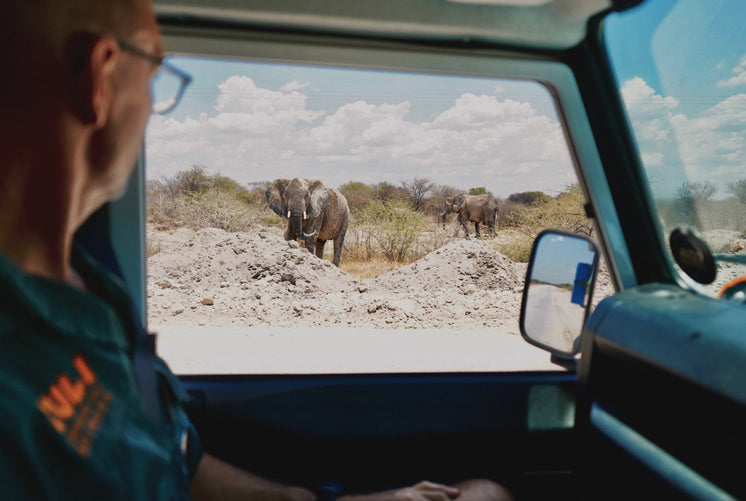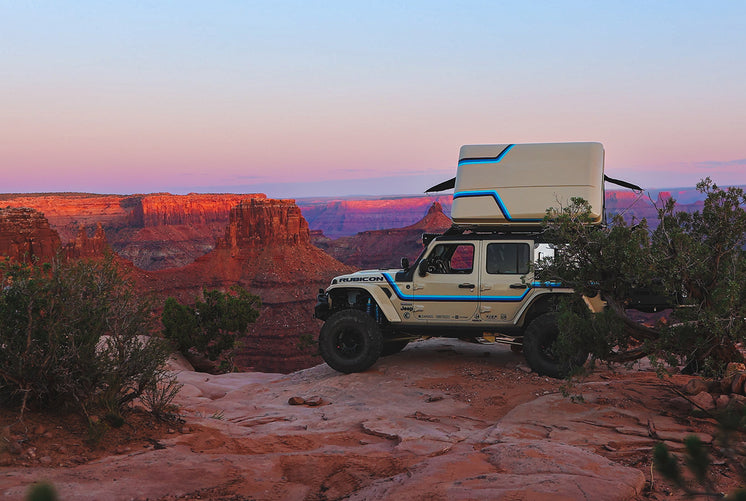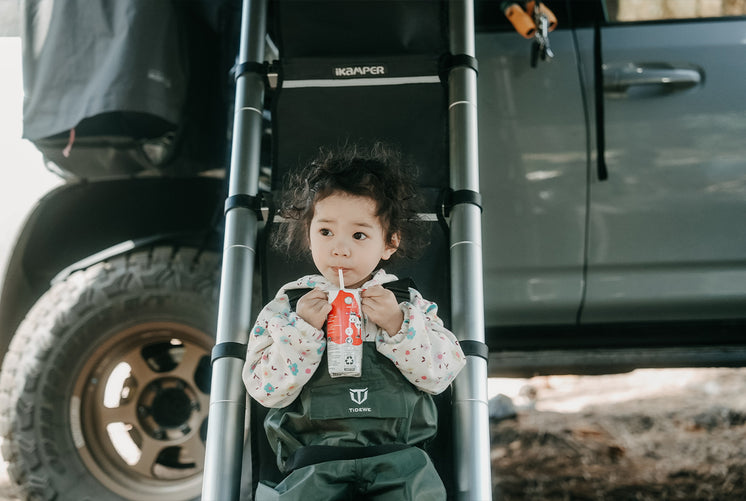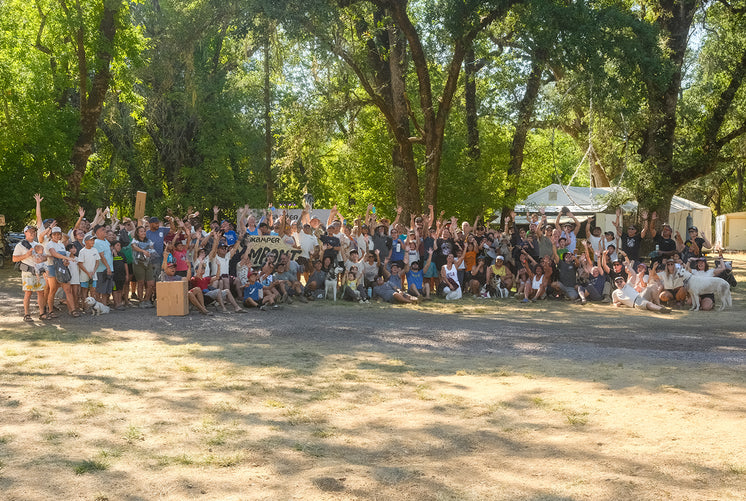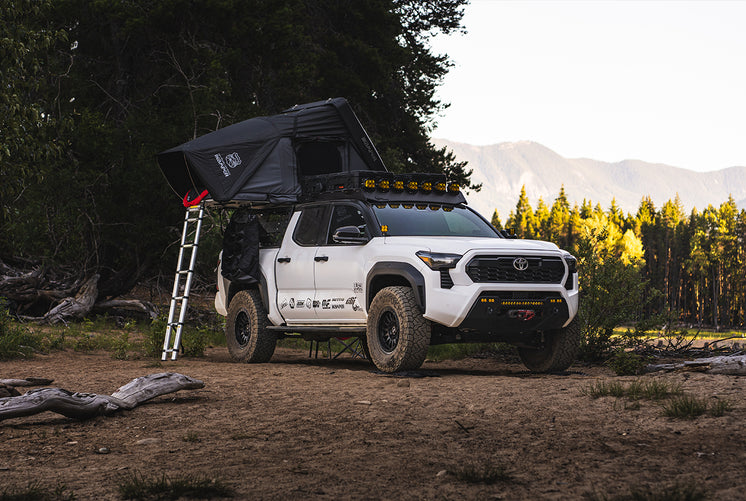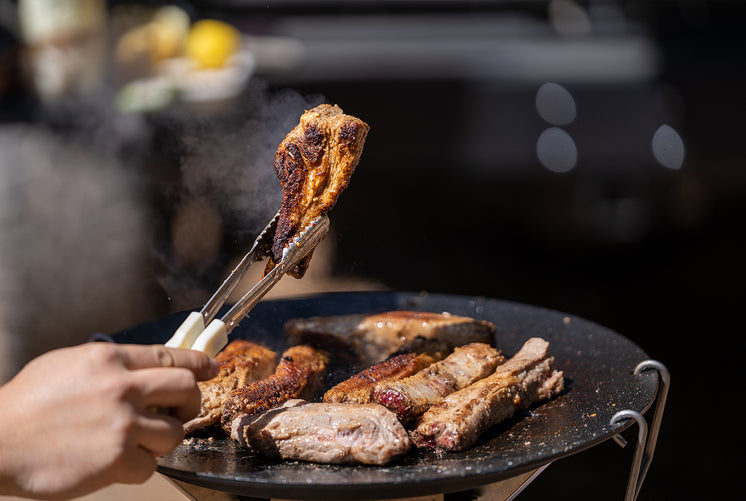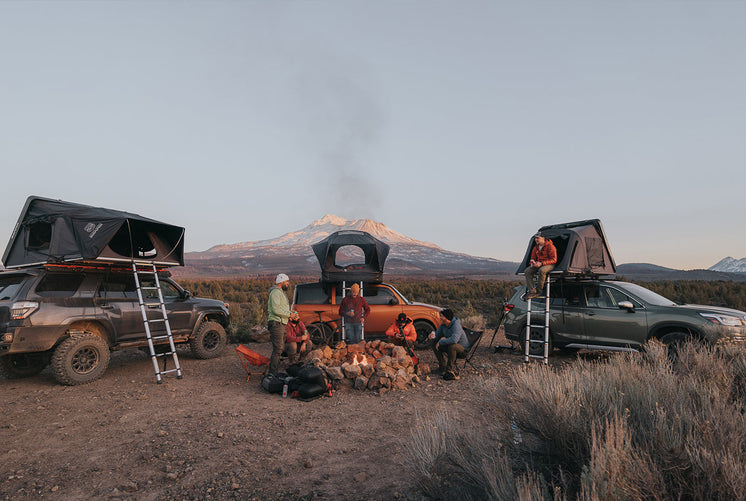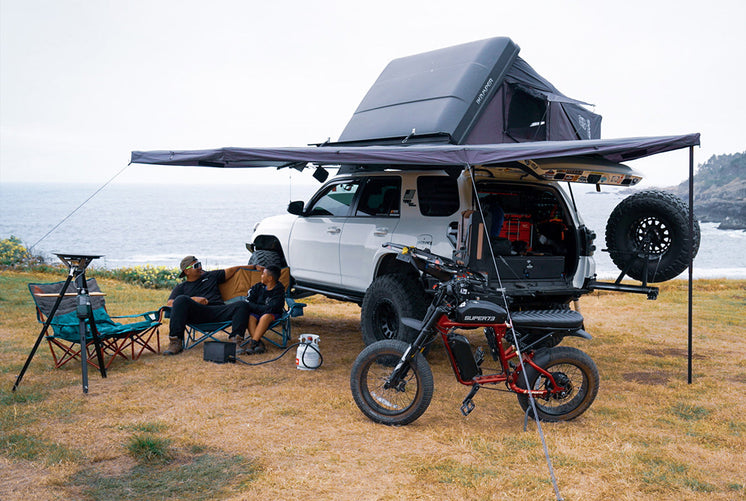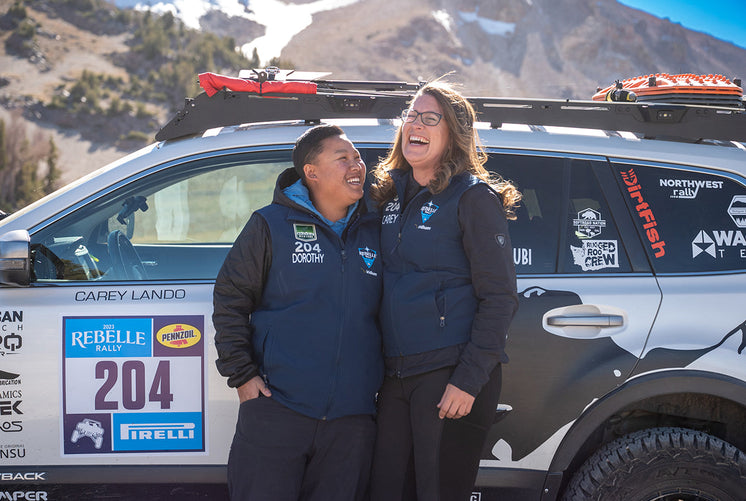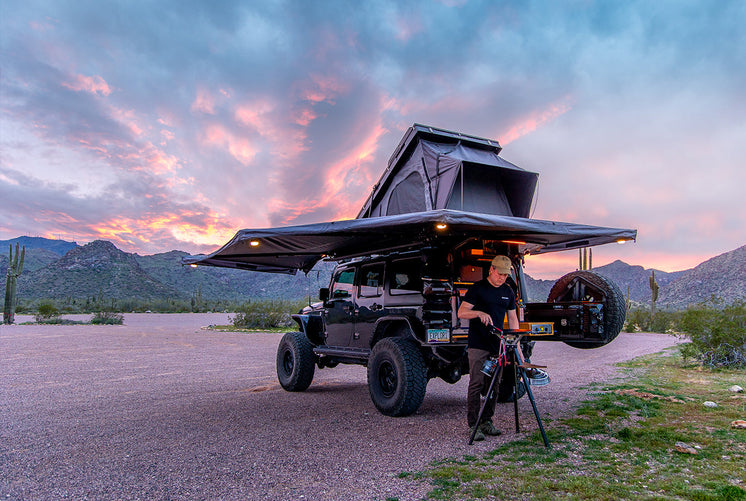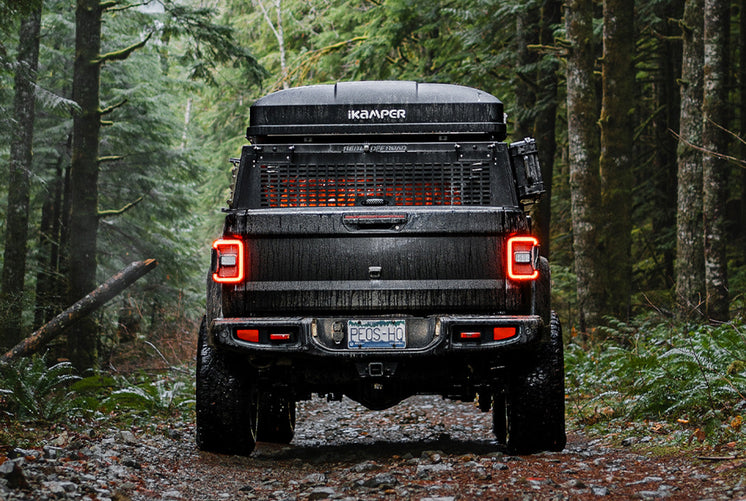Clear Skies In The Ring Of Fire : Mount Shasta, CA
In hopes of trading in negative temps for epic views we packed up camp and headed towards a place that never disappoints - Mt Shasta, CA. If you’re looking for a place to admire the true scale of one of the most iconic volcanoes on the west coast, point your rig in this direction and prepare to be blown away.
As we left Bend, OR, we couldn’t help but make a stop at the Alvord Desert for the many incredible hot springs in the area. Feeling like ourselves again after a quick dip, it was time to get back on the road. We pulled into Mt Shasta with smiles on our faces and fingers crossed for clear skies and a bit of relaxation. The warmer weather, great food, and endless views made for an unbeatable stop as we entered the Northern California landscape.
Meeting up with iKamper R.A.D Ambassador Felipe Silva, we got to flex our basecamp abilities with big meals around the Disco Series & AIOKS cooking systems, all while enjoying the perfect community space in our Annex Plus. Below are some pro tips on how to create a perfect basecamp for your whole crew, no matter where the road takes you.
Our Favorite List of Group Camping Essentials.
Camp Chairs - One for everyone!
Camp Tables - One for every 2 people
Wet Wipes - Always come in handy.
Trash & Recycling Bags - Gotta keep em’ separated.
Drinking Water - 2 Gallons, per person, per day.
Dry Ice - Keep your coolers colder for long with no need to drain it every day.


Our Favorite Gear For Mt. Shasta
Skycamp 3.0 - Having room for everyone makes all the difference. We took advantage of the spacious Skycamp 3.0 to create the perfect basecamp with a view.
Annex Plus - We added the Annex Plus to the mix to create the ultimate brunch area with generous room for 6. This was essential while our path crossed with friends and ambassadors.


Tips for Group Planning:
-
Location PINs - It’s always a good idea to send a message to your entire group with the exact location PIN of your campsite. Have everyone download their maps for offline use before they leave, just in case anyone loses service before reaching camp.
-
Gear List - Make a list of all the gear needed for your group and have each person or party claim what they will be bringing to complete the list. This helps to avoid overpacking, which is super important when you have to pack out what you pack in.
-
Personal vs Group Gear - It’s a good practice to separate group assets from what you need to be self sufficient. Drinking water, wet wipes, lighters, snacks, camp chairs, and tableware are a few of the things to always have by your side. Larger meals, cooking gear, group shelter, and either firewood or a propane fire pit are some pieces of gear that are best to delegate.


Tips For Setting Up Camp:
-
A communal campsite layout is the best way to enjoy being together in the fresh air. Coordinate parking your RTT so everyone’s tent opens to the same area, creating a great sense of togetherness.
-
If wind is a factor at camp, position your vehicles / RTTs so that the hardshell is blocking the wind. You also want to avoid parking downwind of the fire pit.
-
Set up your cooking area close to a tailgate or under a group shelter. You’ll be covered in case the weather changes, and it makes unpacking a lot faster.


Tips for group meals:
-
Who’s cooking? - Delegate meal assignments into breakfast, lunch, and dinner. This is a great way to share cooking responsibilities and gives everyone the opportunity to create a signature meal all their own.
-
What’s on the menu? - Choose meals that can be cooked progressively in the same pot or pan when possible. This makes it much easier for cooking, serving, and cleanup. A few great dishes to try this approach are sausage and eggs, bacon with brussels sprouts, steak fajitas, and for dessert some apple cobbler.
-
Cleaning Up - Everyone taking responsibility for their own tableware really lightens the load for the nightly clean up. Set up bags for garbage and recycling that are easily accessible (right next to the serving table is a great option) so you’re not creating extra work. Last but not least, be sure to store these appropriately overnight so you don’t wake up to wildlife in your campsite.

